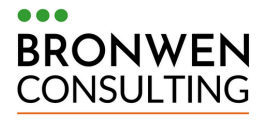October 31, 2025| Written by Bronwen Huron
From Workarounds to Workflow: A Clinician-Focused Interoperability Win
For the past six months, I’ve been part of a consulting team connecting a pump vendor and an EHR vendor to make infusion management truly seamless using IHE and HL7 standards.
We built and validated the workflow end-to-end — from medication order to pump programming to automatic documentation. Now, nurses can scan a medication order and—within a single beep—the pump is programmed with the correct rate, VTBI, and drug details straight from the EHR. On the flip side, starts, stops, rate changes, boluses, and continuous volumes flow directly back into the I&O sheet with one click. No extra rows. No manual entry. No workarounds.
My role focused on clinical workflow analysis, stakeholder alignment, and end-user communication strategy. I served as the bridge between the technical team and frontline staff, making sure every decision supported real-world nursing practice. That meant asking questions like:
“Does this introduce any new safety risks or alarm fatigue?”
“Who downstream depends on this data being right — pharmacy, documentation review, or charge nurses?”
“Should pharmacy or informatics weigh in before we finalize this behavior?”
I also handled terminology alignment and training content development, translating project language into clinical language that would make sense at the bedside. “Within Scope” isn’t a nursing term; “channel” needed to become “line.” Those small distinctions shaped how the training landed — and how confidently staff used the new workflow.



During implementation planning, I designed and delivered on-site training sessions and change-management materials that focused on retention and understanding. One key example: we unpacked the difference between a fixed-volume infusion and a continuous one — not as a technical nuance, but as a workflow behavior that affects how nurses interact with the pump. When clinicians understand why something works the way it does, the change becomes natural, not forced. That clarity improves both safety and adoption.
To sustain success after go-live, I created a voiced-over education deck and job aids the hospital continues to use for staff refreshers and new-hire orientation — ensuring continuity long after project handoff.
Standing in front of those nurses — watching them shift from skeptical to impressed to genuinely grateful — was one of those career moments that reminds me why I do this work.
Huge thanks to Innovative Consulting Group and Dave Dyell for leading the project, to Wes Madden for recommending me for this personal bucket list project , and for all the wonderful professionals I got to work with along the way.
Projects like this sit at the intersection of interoperability implementation, clinical workflow design, and human-centered change management — exactly where I love to work.
